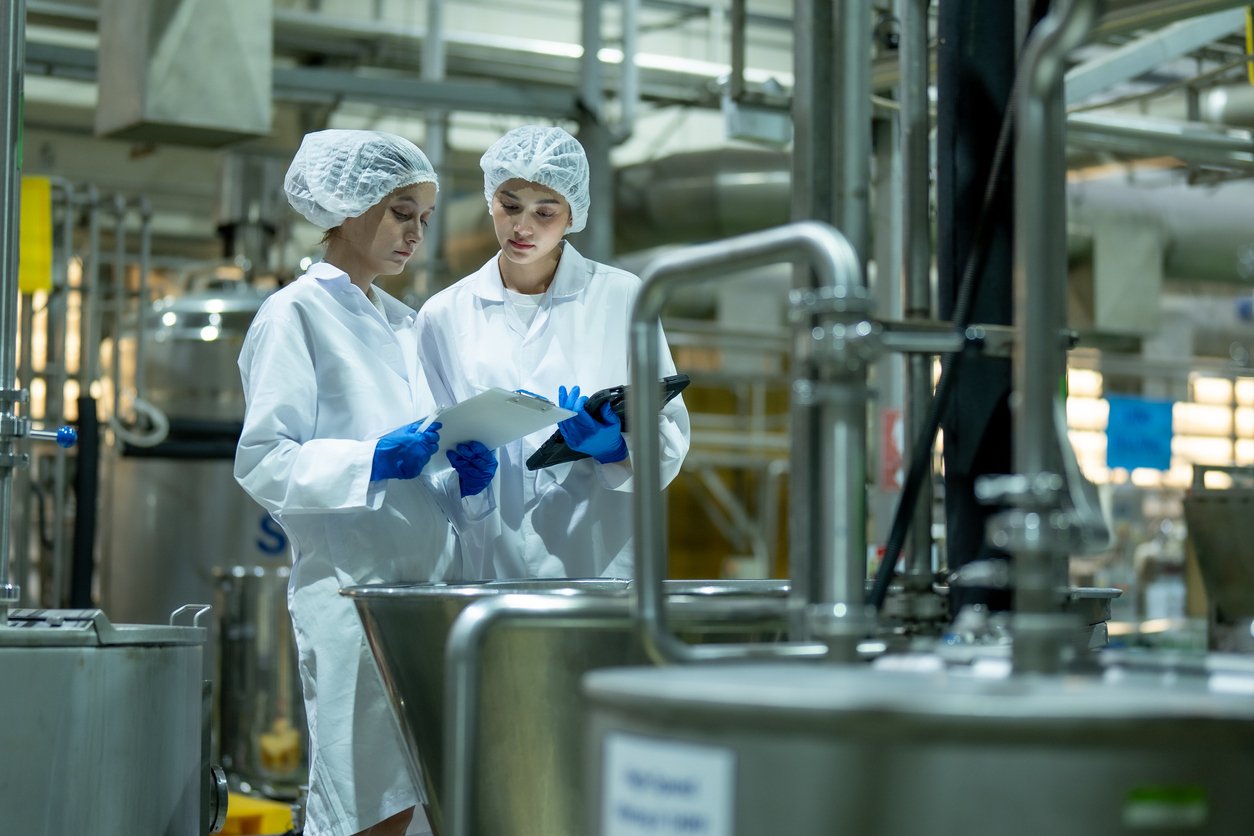Industrial Chemical Mixing & Reactions
Mixing is one of the primary rate drivers for a wide range of chemical reactions. As such, it is also one of the cornerstones of the chemical...

Access MXD Process resources including blogs, technical guides, manuals, and maintenance tips—everything you need to optimize, troubleshoot, and expand your process knowledge.
Discover who we are, the industries we serve, and the trusted brands behind our process equipment and environmental solutions. Learn how our team brings precision, innovation, and reliability to every project.
4 min read
MXD Process Mar 12, 2024 2:46:00 PM
Mixing is an essential part of chemical manufacturing. Without it, consistency, quality, and safety are all at stake. Different types of mixers are used depending on the nature of the materials to be mixed, the desired end product, and the specific requirements of the manufacturing process.
In this article, we’ll discuss the importance of industrial chemical mixing equipment and the different types used in the industry.
Chemical mixing equipment is necessary to provide consistency throughout the mixtures, however, there are several other reasons to have the best mixing equipment possible.
There are 7 different types of mixers typically used in the chemical industry, including:
Tank-mounted agitators are the most common type of mixer used in chemical processing due to their versatility capabilities within a single process.
Industrial agitators are typically mounted to a vessel or designed to be portable to facilitate mixing in multiple vessels – allowing for flexibility.
Static mixers use a series of fixed elements within a pipe or tubing to mix fluids as they flow through. They’re well-suited for continuous processes and are used for mixing liquids, gases, and liquids with gases.
High-shear mixers are designed to generate intense shear forces through a high-speed rotor. They’re particularly useful in creating fine emulsions and dispersions which is essential for the production of coatings, adhesives, and fine chemicals.
Typically in chemical processing, these high-shear mixers are typically mounted to a post with a lift system to accommodate mixing in a variety of size and shape vessels.
Ribbon blenders provide efficient radial and lateral movement, which makes them suitable for blending dry powders, granules, and delicate particulates with minimal damage. This type of mixer ensures consistency in chemical formulations – which is necessary for the chemical manufacturing sector.
Drum mixers blend and mix ingredients in large drums and accommodate a variety of chemical processes involving liquids, solids, and powdery substances – from simple blending to complex chemical reactions.
One advantage of drum mixers is that they allow for mixing directly in the drum that the chemicals are shipped and stored in, eliminating the need to transfer products to outside vessels. This saves time and reduces waste within a process.
Planetary mixers are unique due to their agitator’s orbital motion. This type of mixer thoroughly mixes pastes, slurries, and heavy mixtures – critical for keeping uniformity when mixing reactants in high-viscosity chemical formulations.
Homogenizers are a type of high-shear mixer, but these are specifically designed to create homogenous mixtures by reducing particle size and creating stable emulsions.
They’re key in ensuring the consistency and stability of suspensions and emulsions in chemical products. Additionally, homogenizers are typically installed in-line to allow for the recirculation of process fluids.
Technology is continually changing and improving our processes every day. By embracing technological advancements, chemical manufacturers can achieve higher efficiency, improved product quality, and greater sustainability. With automation, several improvements can be made, such as:
With automation and advanced control systems in place, manufacturers have precise control over mixing speed, time, temperature, and other critical parameters. This advanced precision ensures consistent product quality, even with complex chemical formulations.
Integrated control systems continually monitor the mixing process and allow for real-time adjustments. This form of automation minimizes the risk of human error and improves the reliability of the manufacturing process.
With automation and integrated control systems, data can be collected and analyzed from the mixing process – enabling predictive maintenance and reducing downtime.
By predicting equipment failures ahead of time, manufacturers can schedule maintenance more effectively and avoid unexpected production halts.
Although there are several advantages to having quality chemical mixing equipment, there are challenges as well that should be considered.
While quality mixers offer safety features to handle hazardous materials, it’s not a guaranteed solution. Even with safety measures in place, accidents can still occur since many chemicals are hazardous, posing risks of fire, explosion, or exposure to toxic substances.
To be certain you’re promoting a safe environment and operation, consulting with a process engineer before selecting a mixer is a good choice.
Exothermic reactions can release significant heat, which requires careful control to prevent overheating or degradation of the materials. If the product is heated too much, it may require you to start from the beginning, pose a hazard, or ruin the ingredients of a mixture.
On the other hand, some processes may require heating to facilitate mixing or reaction – necessitating precise temperature control.
In chemical manufacturing, material compatibility is a major concern. Reactive or incompatible materials can lead to dangerous reactions when mixed or decrease the longevity of parts.
Additionally, the mixer you choose must be able to handle materials without causing a reaction. If the materials aren’t compatible, this can increase wear and introduce corrosion into a process over time.
Without quality industrial chemical mixing equipment, you may be sacrificing quality and consistency in your mixes. Finding the best type of mixer for your material and application is essential to meet your manufacturing needs.
To find the best mixing equipment, it’s important to consult with an industry expert such as our team at MXD Process.
.jpg)
Mixing is one of the primary rate drivers for a wide range of chemical reactions. As such, it is also one of the cornerstones of the chemical...

Advanced process system design, a key aspect of process system engineering, isn’t just a buzzword – it’s the backbone of efficient and safe...

In the chemical processing industry, the performance of your equipment is the bedrock of your operation. At the heart of many processes are chemical...